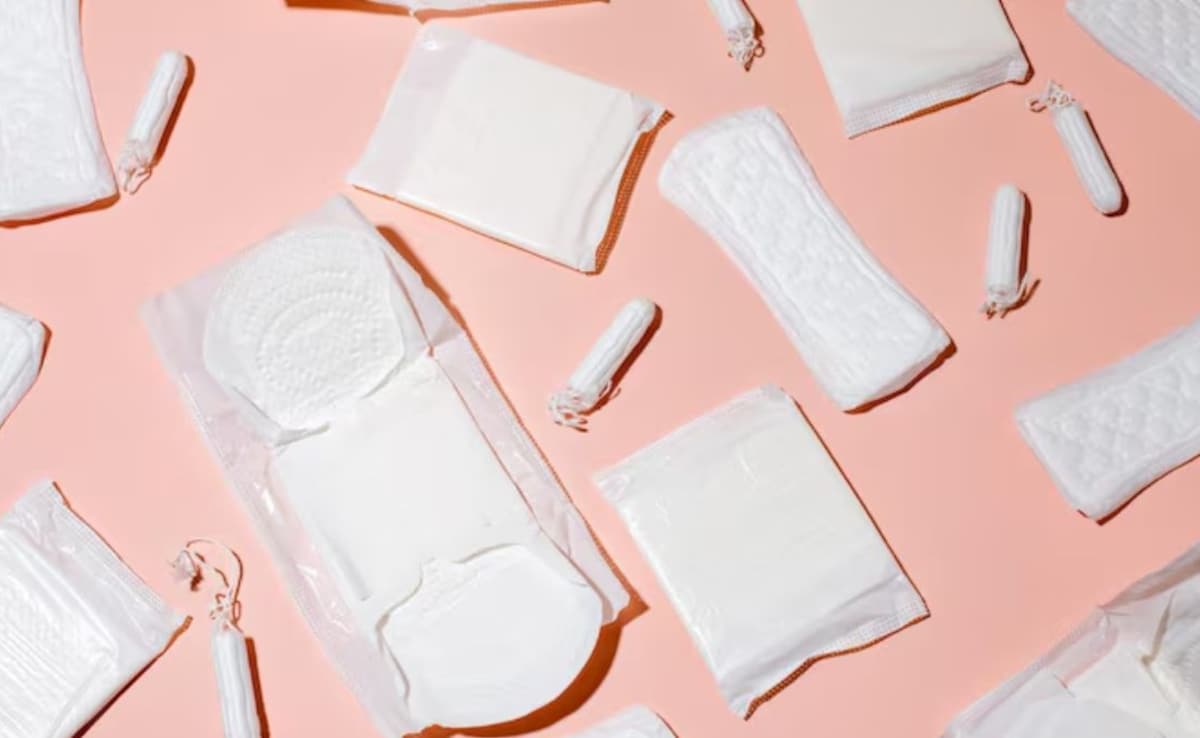
In 1888, the first disposable sanitary pads were introduced in England; the world of hygiene changed, especially for women. For centuries, menstruators have reportedly used makeshift alternatives, moss, papyrus, washable cloth pads made from cotton and scraps, and even sandbags to prevent their clothes from soiling.
However, since the advent of sanitary pads, the lives of women have become easier, not to mention a significant decrease in the number of people getting infected because of using unhygienic products.
Later, we got tampons, menstrual cups, period panties, and reusable pads. Today, we have multiple options to choose from without worrying about leakage and infection.
However, a few videos have been going viral on the internet claiming that sanitary pads have mould. People can be seen holding a pad against the bright light and witnessing dark lumps in the centre, claiming that it could be mould.
As if menstrual cramps, backache, and mood swings were not enough, now we also need to check every sanitary napkin for mould?
These unverified claims have left many panicking about their health, especially parents who have adolescent daughters at home. To clarify these doubts, we spoke to gynaecologists. It's better to know the truth behind a trend than to follow it blindly.
Do Sanitary Pads Have Mould?
Addressing the elephant in the room, Dr Sonali Jain, HOD, Laboratory Medicine, Kailash Hospital and Heart Institute, Noida, said, "It's very unlikely that mould develops during the manufacturing of sanitary pads. These products are made in sterile, temperature-controlled environments using automated machinery where human contact is minimal," the expert said.

If you store sanitary napkins in damp or humid spaces, moisture can get trapped inside the packaging. Photo: Freepik
"Every batch is subjected to strict microbial testing before it's sealed and packed. The real problem begins after purchase. If pads are stored in damp or humid spaces, for example, inside bathroom cabinets or near water sources, moisture can get trapped inside the packaging," explained the expert.
"India's weather, especially during the monsoon, can further accelerate fungal growth. Women should store their pads in a cool, dry place, away from sunlight and humidity, and always check the expiry date and packaging before use. If a pad looks discoloured or smells odd, it's better to discard it immediately," Dr Jain advised menstruators.
What Are Those Dark Specks In Sanitary Pads If Not Mould?
While Dr Jain clarifies that the dark spots visible under the light are not mould, it still leaves us with a doubt. What is it?
Dr Nidhi Rajotia, Unit Head - Obs & Gynae, Artemis Hospitals, Gurugram, told NDTV, "These lumps are considered to be safe in nature. They are made of the absorbent core, which contains both cellulose and superabsorbent polymers to lock in moisture. This manufacturing process can at times induce clumping of these materials, resulting in a lumpy appearance."
"If the pad looks broken, has a strange smell and is a different colour, it should be discarded," she added further.
Are These Lumps Harmful?
Now that we know that the pad doesn't have mould. The next question is whether these lumps are safe. Dr Rajotia explained, "The small lumps that you see in sanitary pads are included in the absorbent layer of the pads. If you store the pads correctly and use them before the expiration date, they are generally okay to use."

Discard a pad that looks broken, has a strange smell, or is a different colour. Photo: Freepik
"They are the same types of materials used in hospital-grade dressings and wound-care products," added Dr Jain.
"The real concern for users should be how long they are wearing the same pad, not whether there's a lump inside it. Prolonged dampness is what encourages bacterial or fungal growth, not the product material itself," explained Dr Jain.
Signs Of Mould In Sanitary Pads
If at all a sanitary pad has mould, the experts shared a few signs that will help identify the issue easily. The list includes,
- Dark green patches
- Discolouration
- A musty scent
The experts suggested using the product before expiry, which, according to manufacturers, is within 3-5 years of the manufacturing date.
"Over time, materials may break down, making them less absorbent and less clean," added Dr Rajotia.
How Frequently Should A Person Change Sanitary Pads?
A fresh sanitary napkin might not have mould, but that does not mean it can't grow when you are using it. Prolonged use of the same pad is associated with bad odour and infection.

Long-term use of the same sanitary pad can cause bacterial growth, smell, and, in rare cases, mould to form. Photo: Freepik
Hence, the experts suggested changing pads every 4-6 hours when experiencing heavy flow.
"Long-term use can cause bacteria to grow, smell, and in rare cases, mould to form because of moisture," Dr Rajotia added.
The gynaecologists explained that good menstrual hygiene also refers to washing hands before and after changing pads, gently cleaning the intimate area with mild, unscented soap and water, and wearing breathable cotton underwear.
Don't believe any influencer claiming your sanitary napkins are unsafe. To make these products, manufacturers must follow certain guidelines to ensure safety.
Stay clean, leak-proof, and stress-free during your periods!
Track Latest News Live on NDTV.com and get news updates from India and around the world

